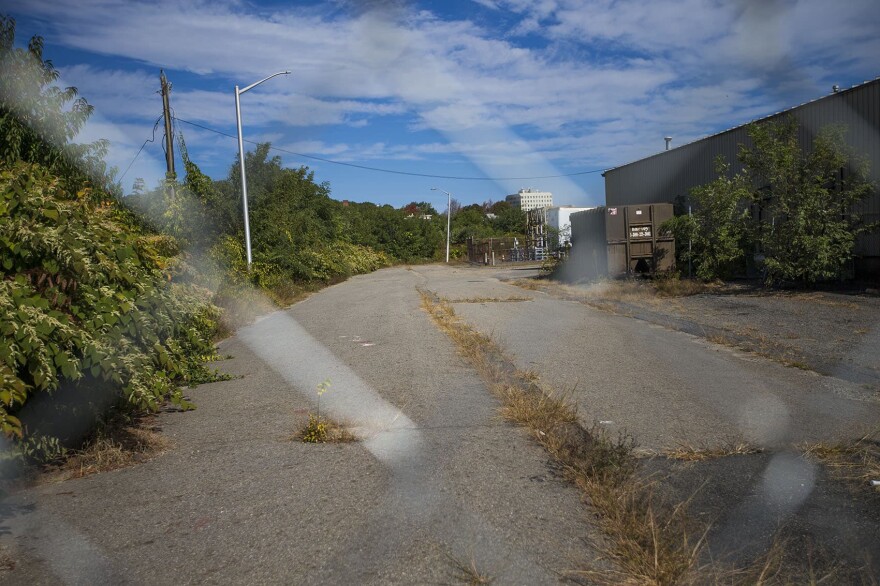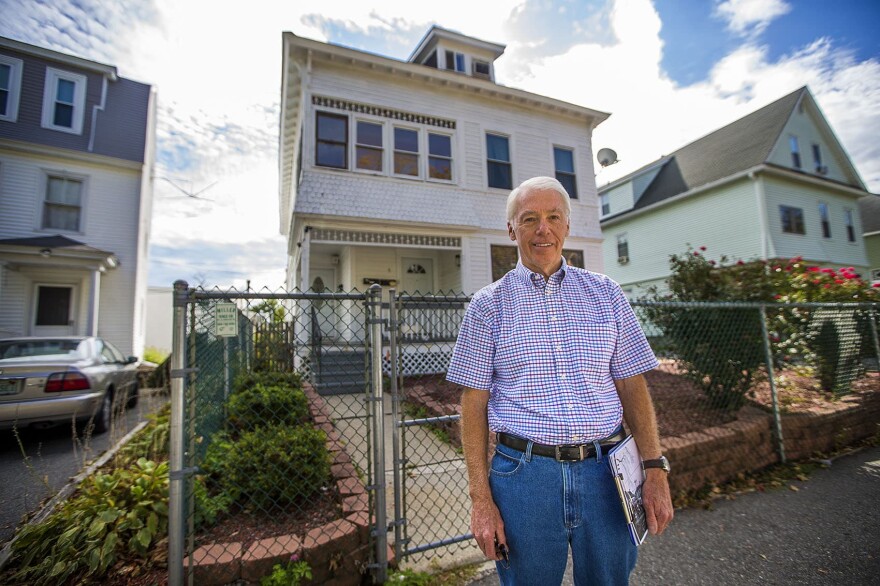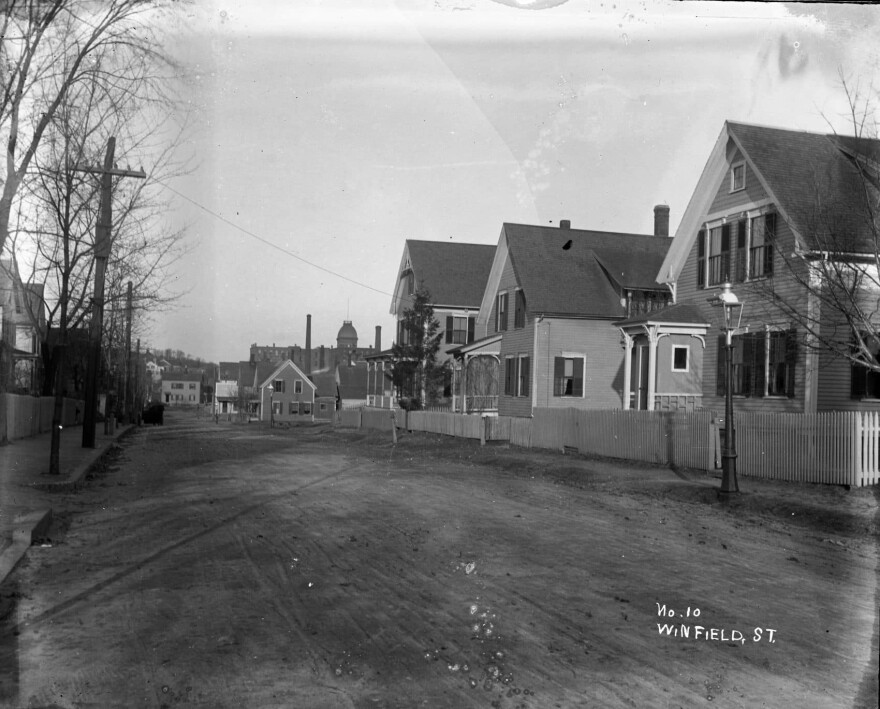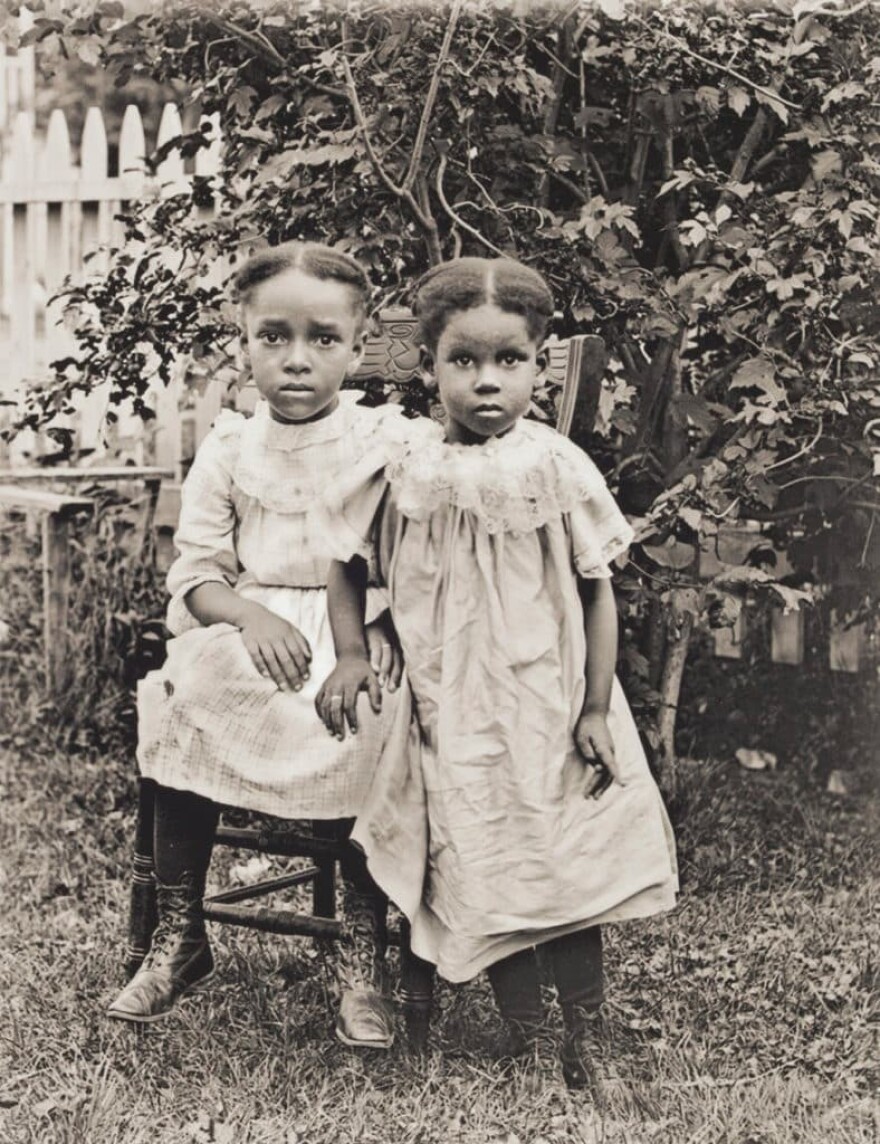Beginning in the mid-1800s, a Worcester neighborhood known as Beaver Brook became a home to African-Americans migrating from the South.
That community is long gone, and a lot of its history went with it. But a trove of glass plate negatives, on view for the first time at the Worcester Art Museum, is helping to rebuild their narratives.
Nick Schuyler, now 74, used to wander around Beaver Brook as a kid.
“This neighborhood had fruit. We had peach trees, plum trees,” he recalls. “We had a big cherry tree back there. My landlady, Miss Tyler, she grew strawberries up there in the back.”
Schuyler remembers the market where he bought penny candy, the multi-family where he took Bible lessons and his warm but watchful neighbors Miss Louise and her sister, Miss Marty.
“She saw you do something wrong she had her little cane, you got hit with it,” he says, laughing.
But now the triple-decker Schuyler grew up in is a vacant lot.
This is a story Frank Morrill knows well. The 73-year-old retired history teacher has been crisscrossing these streets for more than a decade trying to piece together Beaver Brook’s past.
When I meet him, he’s carrying a clipboard with sepia-toned photo prints. They show rows of neat, wooden houses in a section of Beaver Brook a few blocks away from Schuyler’s childhood home. Former slaves lived in them after migrating north during and after the Civil War to abolitionist cities like Worcester.
Morrill explains that the newcomers created their own community in what was the mostly-white, low-income Beaver Brook area. But, he says, in the mid-20th century local companies, including Harrington & Richardson Arms and later Coppus Engineering, bought more than 40 homes in the neighborhood hoping to expand. They demolished the houses, but never rebuilt.
“That was an easy target in the ’50s and early ’60s, and that whole neighborhood came down, and it sits there like that,” Morrill says. “It’s a shame.”
A vast swath of Beaver Brook is desolate, fenced in and overgrown with weeds. What does remain, though, is a collection of rare images of the neighborhood and its residents that Morrill acquired. One of them is a family portrait of Schuyler’s forebears in a snowy park posing on sleds.
“This is a picture of my grandfather, and my aunts and uncles,” Schuyler describes. “And my grandfather passed away at 97, I believe.”
The portrait is from around 1904. Schuyler didn’t know it existed until a few months ago. It was taken by William Bullard, a white photographer who also lived in Beaver Brook.
When Bullard died in 1918, his glass plate negatives went on a shelf and remained there for decades.
In 2003, Morrill purchased the collection of 5,400 images from a resident in nearby East Brookfield. Morrill says it contained a surprisingly large number of portraits featuring people of color, considering they only accounted for about 1 percent of the population.
Along with the trove came the photographer’s logbook, which has been the key to identifying the subjects and unlocking the area’s history.
“He showed a very human side to these people when we have to remember they weren’t accepted in many places,” Morrill says. “This was a difficult time for these people.”
Morrill has been partnering with Clark University and the Worcester Art Museum to track down descendants, including Schuyler, using public records and genealogy sites like Ancestry. Their stories along with 80 portraits — printed from the glass plate negatives dating 1897 to 1917 — are in an exhibition at the museum.
Curator of photographs Nancy Burns says Bullard captured something very intimate and real in his neighbors.
“This might be the only extant photograph of Ralph Mendis,” she says, pointing to one of her favorites on the wall.
Mendis is just 5-years-old in this picture. He’s wearing a double-breasted coat with a white scarf tied around his neck. His left hand is nestled in his pocket, and he’s looking directly into the photographer’s lens. Burns calls it “turn-of-the-century swagger.”
“Ralph is the child of a man who immigrated to Worcester from Jamaica,” Burns says. “A very small contingent of the immigrants to Worcester of people of color were from the Caribbean. His mother migrated here from North Carolina and sadly, two years after this photograph was taken, Ralph died.”
Other portraits feature a biracial family with Native American and African-American parents, a local musician and teacher with his viola and a man in his uniform from the Spanish-American War. There are also a few people with bicycles because the first African-American cycling world champion, Marshall Walter “Major” Taylor, lived in Worcester.
Burns says Bullard clearly honored his subjects and let them represent themselves the way they wanted to be seen — often wearing their Sunday best.
Clark University history professor Janette Greenwood says Bullard’s portraits have the power to upend expectations about who the residents of Beaver Brook were in the decades after the Civil War.
“This is the same period when Jim Crow laws are going into effect in the South and lynchings are on the rise,” Greenwood says. “I think this speaks to the resilience of these men and women and what they were able to accomplish and this ongoing story of creation and recreation that is part of American history.”
Greenwood wrote a book, titled “Fruits of Freedom,” about the migration of former slaves to Worcester between 1862 and 1900. After seeing Morrill’s collection, and being wowed by it, she enlisted her students to find and interview descendants around the country.
The project also created a community advisory board. Descendant Benetta Kuffour is a member and says, “Being an African-American and knowing that you have a history is a miracle in itself. Because not all African-Americans can say that. If you were slaves you took the name of whoever the plantation owner was. And the history sort of like died when you died.”
In the gallery, Kuffour shows me a portrait of two wide-eyed, little girls in frilled, white dresses. The team has been trying to confirm that they’re Kuffour’s relatives.
They may be the grandchildren of Bethany Veney, a well-documented former slave and Kuffour’s great-great-grandmother who migrated north from Virginia.
“She vowed to keep going back and bringing family members up. And so that’s why I’m here today in Worcester,” Kuffour says.
Kuffour’s mother, Laura Pearson, was instrumental in filling in gaps in the family and neighborhood’s history. She still lived in Beaver Brook and died just two weeks ago at age 94.
“She knew many of the people in those photographs although they were older than her,” Kuffour says. “She knew them.”
Standing in the gallery, Kuffour says she’s proud of her mother and grateful for the scope of the Bullard project.
“It’s not just my history, it’s everybody on the wall that has an impact on my life,” Kuffour says. “Because for African-American history this is a way for people to begin that journey of the past.”
Kuffour and the entire team hope the exhibition — and the research project website — will help more people learn about, and pass down, this history so the next generation knows where they came from.
____
“Rediscovering an American Community of Color” is on display at the Worcester Art Museum through Feb. 25, 2018.















Copyright 2017 WBUR



